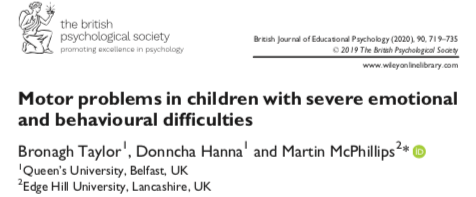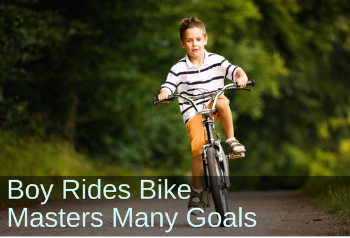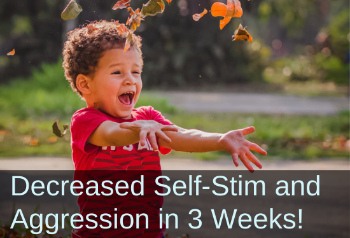 This research (Taylor et al., 2020) validates what Harald Blomberg, MD taught: Children who did not receive enough of their innate neurodevelopmental movements in infancy were less emotionally mature and more likely to have behavior challenges.
This research (Taylor et al., 2020) validates what Harald Blomberg, MD taught: Children who did not receive enough of their innate neurodevelopmental movements in infancy were less emotionally mature and more likely to have behavior challenges.
We can imagine it is hard to be self-regulated and emotionally mature if our foundational brain and sensory systems are in an immature state. Why? Because without the full repertoire of infant movements, we are often left in states of fight, flight, or freeze, along with hypersensitivities. Fight-or-flight and freeze states can be useful in true threatening situations, but if these states are constant, we are less likely to make transitions well and more likely to be volatile and reactive.
When our sensory systems lack full maturity, we are more easily triggered and uncomfortable. Both fight-or-flight states and hypersensitivity can lead to anxiety. No wonder so many children have behavior challenges! These are not bad kids, just kids who are misunderstood and in need of help.
Retained Primitive Reflexes Are Associated with Emotional and Behavior Difficulties
In Taylor et al. (2020), researchers found that children with emotional and behavioral difficulties (EBD) are more likely to have motor skills deficits and retained primitive reflexes compared to children with no EBD. This study is noteworthy because the authors accounted for many contributing factors involved in EBD. They measured much more than just motor skills—including past trauma and family disturbances. But even after these other factors were taken into account, motor issues and retained primitive reflexes were each still statistically significant predictors of EBD. Based on their results, the authors state:
"Specific approaches aimed at improving different aspects of motor function in school children with EBD should be incorporated into classroom practice as a matter of urgency, with a particular emphasis on early intervention." (Taylor et al., 2020)
This research supports our focus to use activities that mature the neuro-sensory-motor systems beyond fight, flight, and freeze states and into more calm and functional states—along with the ability to process sensory information with greater ease and comfort.
OT Amazed at Changes in Boy's Behavior in 6 Weeks
We see profound transformations in behavior when children receive the neurodevelopmental movements they need to feel inner calm and safety. For example, an occupational therapist used the innate rhythmic movements from the Brain and Sensory Foundations, First Level (Part 1) course to bring tremendous help to a boy with severe violent behaviors:
"I had one of my patients begin doing the rhythmic movements from 6 weeks ago. This child is 8 years old and attends a special school for emotionally and behaviorally challenged children that can't attend regular public education. When he gets frustrated at school it typically results in a major melt down with hitting, throwing desks and chairs, and yelling. He has had 4-5 adults holding him down on the floor at times. Since he started doing the rhythmic movements, this boy has not had hardly any behavior or emotional outbursts at home or at school. He has already made great gains with balance, coordination, sensory processing, impulse control, and frustration tolerance and it has only been 6 weeks. Amazing!" H.S., Occupational Therapist
The case studies below show profound improvements in behavior and emotional regulation by using rhythmic movements and primitive reflex integration. See more case studies showing improvements in behavior.
This 15-year-old girl with Autism struggled with a range of issues: balance and coordination, speech, and intense meltdowns. Now, she is more relaxed and happy in general, her coordination has improved, she is communicating well, and she isn't experiencing meltdowns or as many personal conflicts. Read about the significant improvements in motor skills, speech, and behavior since this teenager has been practicing rhythmic movements and innate reflex integration.
5-year-old Kevin's mom was concerned about his delayed motor skills, for example his inability to ride a bike, difficulty tying his shoes, and writing his name. He would also sometimes pace and have tantrums, and he tended to play by himself more often than with other kids. Find out how these gross-motor and fine-motor issues and behavior challenges resolved after a period of 9 weeks working with rhythmic movements and innate reflex integration.
Rhythmic movements and reflex integration made a big difference for this 5-year-old boy with ASD. The inability to communicate, frequent self-harm, and aggressive behaviors were some of the issues this child was contending with. After 3 weeks of rhythmic movements, his behavior noticeably improved, and he was even described as smiley, giggly, cuddly, and playful. In addition, he exhibited very early signs of verbal communication. Read the full case study to learn how neurodevelopmental movements helped with self-stim, behavior, speech, and more.
See more case studies showing improvements in behavior after using rhythmic movements and primitive reflex integration from the Brain and Sensory Foundations program.
Reference
Taylor, B., Hanna, D., & McPhillips, M. (2020). Motor problems in children with severe emotional and behavioural difficulties. British Journal of Educational Psychology, 90(3), 719–735.
Sonia Story, MS has been teaching neurodevelopmental movements since 2006.
She is an honors graduate with a Bachelor's degree in biology/psychology and a Master’s degree in Movement Sciences.
Sonia developed the Brain and Sensory Foundations program to provide comprehensive training in neurodevelopmental movements—combining innate rhythmic movements, play, primitive reflexes, and postural reflexes.
She is the author of The Importance of Reflex Integration and the Evidence eBook, giving the rationale and evidence basis for using neurodevelopmental movements for helping with challenges such as ADHD, Sensory Processing Disorders, anxiety, emotional dysregulation, visual skill deficits, poor social skills, gross and fine motor delays and other neurodevelopmental and behavioral disorders.
Her work is featured in numerous podcasts, summits, and conferences, and in the books Almost Autism: Recovering Children from Sensory Processing Disorder; Special Ed Mom Survival Guide; Family Health Revolution; and Same Journey, Different Paths—Stories of Auditory Processing Disorder.
Sonia’s mission is to help children and families experience the profound benefits of neurodevelopmental and integrative movements for more functional and fulfilling lives.





